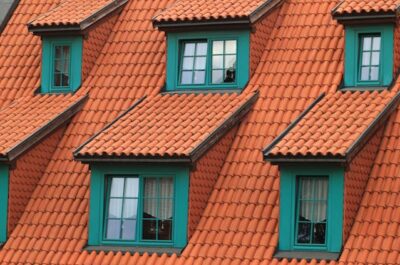We’ve started noticing some minor yet bold shifts between commercial and residential construction over the past few years. Materials once used to build warehouses and office complexes are now showing up in high-end home renovations, bringing new standards and efficiency.
Roofing and insulation are leading this crossover. Homeowners today want more than visual appeal. They are seeking durability, lower maintenance, and better energy control. And the products that have proven themselves on commercial job sites are answering that call.
Innovations like metal and membrane roofs or insulation systems designed for continuous thermal protection are quietly reshaping what home comfort means. The result is a new generation of residential builds that look better, last longer, and perform to a higher standard.
Why Commercial Building Innovations Are Shaping Residential Design
Walking past a newly renovated home and seeing elements that feel more light-industrial than classic suburban is no longer unusual. The reason for this is the long-term cost-saving advantages of commercial construction innovations. No wonder that forward-thinking homeowners and designers are borrowing ideas from that toolbox.
A few other factors also drive this crossover:
- Sustainability Expectations: As shown by the National Association of Home Builders (NAHB), over 96% of builders prioritize sustainable construction practices that align residential design with commercial efficiency.
- Proven Durability: Commercial materials are more prone to lasting under heavy use, giving homeowners confidence in long-term performance.
- Material Innovation: Reflective coatings and advanced glazing are just a minor part of construction materials that have migrated from industrial to residential projects. The proof is up to 20% of yearly energy cost savings for houses with such solutions.
Roofing Trends That Crossed Over to Homes
Some of the most striking upgrades in residential design today come straight from commercial roofing. Homeowners exploring different types of roofing are now considering new materials and designs, mainly for their resilience and efficiency.
Metal and Membrane Roofs
Saving up to 40% on energy costs does sound too attractive to ignore. Although metal and membrane roofs are more expensive than standard asphalt roofs, the investment pays off in the long run.
Metal reflects solar radiation instead of absorbing it, keeping interior spaces cooler during summer months. On the other hand, TPO and PVC singly-ply membrane options prevent moisture buildup and heat transfer due to their airtight sealing capabilities.
For many homeowners, that reliability and thermal efficiency justify the higher upfront cost. It’s no longer about durability, but also building a home that performs better year after year, even under extreme weather conditions.
Flat and Low-Slope Roof Designs
Flat and low-slope roofs used to be a purely commercial choice, designed for easy equipment access and efficient drainage. Now, their functionality has blended with the minimalist design, thus attracting contemporary residential architects.
Flat roofs are a great foundation for AC units, solar panels, and unique rooftop gardens that otherwise wouldn’t be possible to have on a steep-pitched structure.
Beyond aesthetics, the real value lies in their efficiency. With a flat and low-slope roof, homeowners gain both an architectural statement and measurable long-term savings. That’s a combination strongly rooted in commercial construction logic.
Insulation Practices Borrowed From the Commercial Sector
Along with roofing, insulation is also one of the most important elements connecting commercial and residential design. It’s all about controlling energy use and protecting the building envelope from within. Many of the techniques used in commercial construction for decades are now being applied in homes to achieve the same goals: consistent indoor temperatures, lower utility costs, and longer material lifespan.
Builders are increasingly adopting industrial-grade solutions such as continuous insulation systems and spray foams to close air gaps and stop thermal leaks that older residential methods couldn’t fully address.
Continuous Insulation Systems
Commercial builders have long used continuous insulation to eliminate thermal bridges, the points where heat escapes through wall studs or floor joints. Instead of placing insulation only between framing, continuous systems create a sealed thermal envelope around the entire structure.
The same logic now applies to residential projects. Paired with other innovative technology, the systems help to reduce energy loss, as well as prevent condensation and keep interior temperatures more consistent.
Closed-Cell Spray Foam
Materials like closed-cell spray foam and rigid foam boards have also made the jump from industrial sites to private homes. Providing superior air sealing and moisture resistance, they create tight and well-insulated envelopes, which is especially beneficial for older homes with non-uniform framing.
The rigid foam panels, on the other hand, add an extra thermal layer in basements, attics, and exterior walls, thus reducing the heat loss.
How These Commercial Trends Benefit Homeowners
Borrowing ideas from the commercial projects has clear payoffs for residential construction. Materials and methods that keep office buildings efficient and low-maintenance now provide long-term value and comfort to our homes.
- Energy Efficiency and Cost Savings: According to the U.S. Department of Energy, homeowners can save up to 30% on their energy bills with a combined system featuring insulation, air sealing, and proper thermostat settings.
- Sustainability and Compliance: Homeowners begin meeting new efficiency standards more easily thanks to commercial solutions. This means reducing carbon output and qualifying for green certifications and local incentive programs.
- Design Flexibility: Broader material choice and technologies open new creative directions for architects and homeowners. Integrated solar systems and roof gardens help create clean, modern lines for more efficient use of space without compromising style or structure.
Final Thoughts
The overlap between commercial and residential construction is no coincidence.
As technological development continues, we are more prone to look beyond traditional residential methods and find solutions with real value for home efficiency. What began as a response to stricter energy codes and higher durability demands has now become the new benchmark for quality.
The future of home renovation is already here, and it’s being built with the same precision and innovation that once defined the commercial sector.
View the original article and our Inspiration here


Leave a Reply